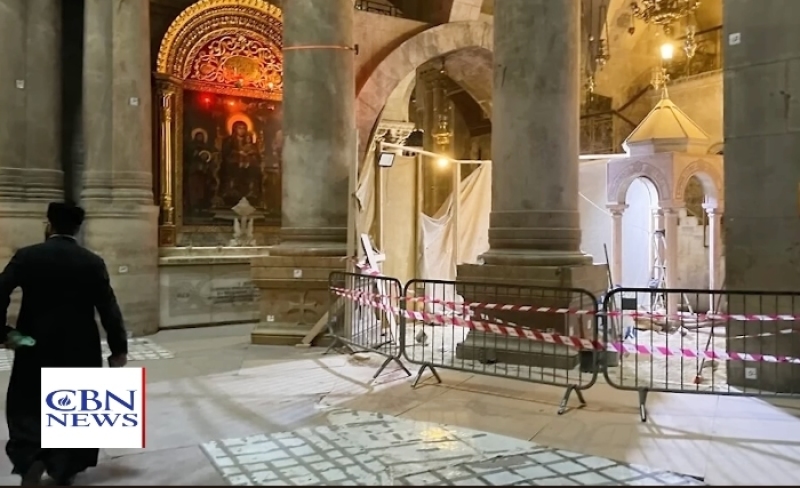
Archaeologists excavating beneath the Church of the Holy Sepulchre in Jerusalem's Old City have uncovered evidence of an ancient garden, supporting the Gospel of John's description of the site where Jesus was crucified and buried.
The findings were revealed as part of a landmark excavation conducted during renovations, which showed evidence of olive trees and grapevines dating back approximately 2,000 years, according to All Israel News. Traces of these plants were identified through archaeobotanical and pollen analysis.
The excavation, led by Professor Francesca Romana Stasolla of Sapienza University in Rome, began in 2022 as part of a restoration project. Currently, there are no exposed digging areas, as preparations are underway for the upcoming Easter celebrations.
During the excavations, the team discovered layers beneath the basilica’s floor dating back to the Iron Age, including pottery, oil lamps, and burial sites. The evidence of the pre-Christian garden suggests that the area transitioned from a quarry to cultivated land before becoming a burial site.
The Church of the Holy Sepulchre is recognized as the traditional site of both Golgotha (Calvary) and Jesus' tomb, with the first church built there by Emperor Constantine in the 4th century after his mother, Helena, identified the location.
Stasolla’s team also uncovered a circular marble base beneath the aedicule—the shrine encasing the tomb—believed to be part of Constantine’s original structure, as early depictions from the fifth and sixth centuries describe it as circular. Further tests are underway to determine the origin of the marble and provide additional historical insights.
The site has undergone significant changes over time. Originally a quarry outside Jerusalem's walls during Jesus' time, it later became a cemetery with rock-cut tombs, a common burial practice in ancient Israel.
Initially located outside the city walls in the 1st century, the site was incorporated into the city as part of Aelia Capitolina in the 2nd century A.D., where a temple to Venus was built over it by Emperor Hadrian. Constantine’s church replaced this temple and enclosed both the crucifixion and burial sites.
Throughout history, the site has been rebuilt multiple times, including significant destruction when the Persians burned the church in the 600s A.D. and damage during the reign of the Fatimid caliph, Al-Hakim, in the 11th century. The Crusaders later renovated the church, giving it the layout and style it has today.
The excavation revealed low stone walls and filled-in soil, indicating efforts to transform the former quarry into a cultivated area, which aligns with the Gospel's mention of a garden.
Stasolla remarked, “Low stone walls were erected, and the space between them was filled with dirt.” She added, “The archaeobotanical findings have been especially interesting for us, considering what is mentioned in the Gospel of John, which is thought to have been written or collected by someone familiar with Jerusalem at the time. The Gospel mentions a green area between Calvary and the tomb, and we identified these cultivated fields.”
The final round of excavations is set to resume after Easter, though the documentation and publication of the findings are expected to take many years.
















